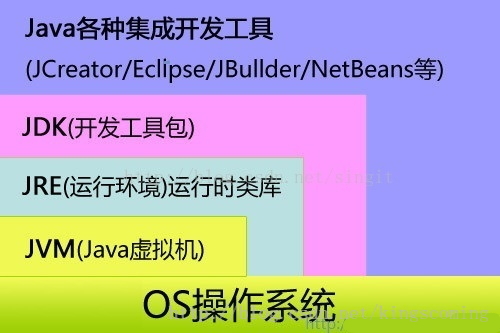因此,如果你在一个shell里面,执行exec ls那么,当列出了当前目录后,这个shell就自己退出了,因为这个shell进程已被替换为仅仅执行ls命令的一个进程,执行结束自然也就退出了。为了避免这个影响我们的使用,一般将exec命令放到一个shell脚本里面,用主脚本调用这个脚本,调用点处可以用bash a.sh,(a.sh就是存放该命令的脚本),这样会为a.sh建立一个sub shell去执行,当执行到exec后,该子脚本进程就被替换成了相应的exec的命令。
source命令或者".",不会为脚本新建shell,而只是将脚本包含的命令在当前shell执行。
不过,要注意一个例外,当exec命令来对文件描述符操作的时候,就不会替换shell,而且操作完成后,还会继续执行接下来的命令。
exec 3<&0:这个命令就是将操作符3也指向标准输入。
# echo "ls -li" >&6
df -h
ls -li
free -m
-bash: syntax error near unexpected token `&'
DESCRIPTION
This command treats its arguments as the specification of one or more subprocesses to execute. The arguments take the form of a standard shell pipeline where each arg becomes one word of a command, and each distinct command becomes a subprocess.
If the initial arguments to exec start with - then they are treated as command-line switches and are not part of the pipeline specification. The following switches are currently supported:
-keepnewline
Retains a trailing newline in the pipeline's output. Normally a trailing newline will be deleted.
--
Marks the end of switches. The argument following this one will be treated as the first arg even if it starts with a -.
If an arg (or pair of arg's) has one of the forms described below then it is used by exec to control the flow of input and output among the subprocess(es). Such arguments will not be passed to the subprocess(es). In forms such as ``< fileName'' fileName may either be in a separate argument from ``<'' or in the same argument with no intervening space (i.e. ``<fileName'').
|
Separates distinct commands in the pipeline. The standard output of the preceding command will be piped into the standard input of the next command.
|&
Separates distinct commands in the pipeline. Both standard output and standard error of the preceding command will be piped into the standard input of the next command. This form of redirection overrides forms such as 2> and >&.
< fileName
The file named by fileName is opened and used as the standard input for the first command in the pipeline.
<@ fileId
FileId must be the identifier for an open file, such as the return value from a previous call to open. It is used as the standard input for the first command in the pipeline. FileId must have been opened for reading.
<< value
Value is passed to the first command as its standard input.
> fileName
Standard output from the last command is redirected to the file named fileName, overwriting its previous contents.
2> fileName
Standard error from all commands in the pipeline is redirected to the file named fileName, overwriting its previous contents.
>& fileName
Both standard output from the last command and standard error from all commands are redirected to the file named fileName, overwriting its previous contents.
>> fileName
Standard output from the last command is redirected to the file named fileName, appending to it rather than overwriting it.
2>> fileName
Standard error from all commands in the pipeline is redirected to the file named fileName, appending to it rather than overwriting it.
>>& fileName
Both standard output from the last command and standard error from all commands are redirected to the file named fileName, appending to it rather than overwriting it.
>@ fileId
FileId must be the identifier for an open file, such as the return value from a previous call to open. Standard output from the last command is redirected to fileId's file, which must have been opened for writing.
2>@ fileId
FileId must be the identifier for an open file, such as the return value from a previous call to open. Standard error from all commands in the pipeline is redirected to fileId's file. The file must have been opened for writing.
>&@ fileId
FileId must be the identifier for an open file, such as the return value from a previous call to open. Both standard output from the last command and standard error from all commands are redirected to fileId's file. The file must have been opened for writing.
If standard output has not been redirected then the exec command returns the standard output from the last command in the pipeline. If any of the commands in the pipeline exit abnormally or are killed or suspended, then exec will return an error and the error message will include the pipeline's output followed by error messages describing the abnormal terminations; the errorCode variable will contain additional information about the last abnormal termination encountered. If any of the commands writes to its standard error file and that standard error isn't redirected, then exec will return an error; the error message will include the pipeline's standard output, followed by messages about abnormal terminations (if any), followed by the standard error output.
If the last character of the result or error message is a newline then that character is normally deleted from the result or error message. This is consistent with other Tcl return values, which don't normally end with newlines. However, if -keepnewline is specified then the trailing newline is retained.
If standard input isn't redirected with ``<'' or ``<<'' or ``<@'' then the standard input for the first command in the pipeline is taken from the application's current standard input.
If the last arg is ``&'' then the pipeline will be executed in background. In this case the exec command will return a list whose elements are the process identifiers for all of the subprocesses in the pipeline. The standard output from the last command in the pipeline will go to the application's standard output if it hasn't been redirected, and error output from all of the commands in the pipeline will go to the application's standard error file unless redirected.
The first word in each command is taken as the command name; tilde-substitution is performed on it, and if the result contains no slashes then the directories in the PATH environment variable are searched for an executable by the given name. If the name contains a slash then it must refer to an executable reachable from the current directory. No ``glob'' expansion or other shell-like substitutions are performed on the arguments to commands.











还没有评论,来说两句吧...